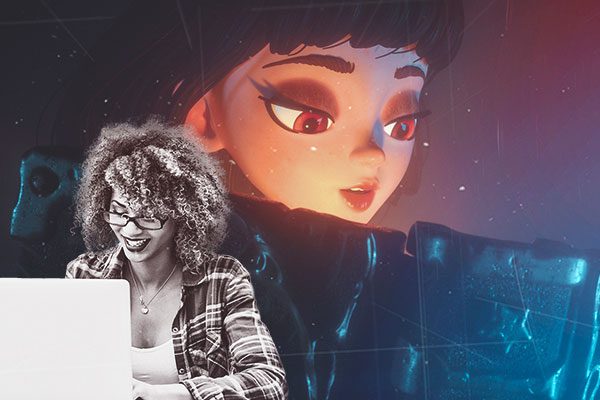

This is a celebration of the new possibility of upholstery. In the Mesh Hug chair, metal meshes are used as a special kind of fabric with the draping method commonly used in cloth making to shape the whole chair. Snow in Memory and Mesh Hug are two experiments of different materials and structures of upholstery. Upholstery, the dress for furniture, is never only a story of fabric. By dressing and changing the different upholsteries on the chair, we will bring excitement to both the furniture and the surrounding environment. The upholstery can be put on and taken off as easily as apparel for humans.
Rhode island school of design animation series#
The idea of the Dress Your Chair project is to design a series of upholstery works for a single common chair, the IKEA ADDE Chair. As apparel for humans, upholstery has the power to shape the identity of furniture. I hope our furniture could not only bring people happiness but also please itself. The Dress Your Chair project started from this question. One day, at my apartment, I saw my IKEA ADDE chair sitting near the window, facing the outside world. Because the carton of milk is kept safe on top of a small wooden podium. Luna might spill the bowl of cereal, but not the carton of milk.

The chair wouldn’t want the dog to spill the milk on its seat.Įspecially when the seat is fluffy and textured, made of foam. “Oh shit, no don’t put your cereal on me, you will def spill that shit on me, if you don’t, that stupid dog will spill it.”

Mango, the orange cat who is wearing a backpack shares his story and listens to how his friends react to his mom’s green chair. Mango’s friends, Olivia, Duna, Dawn,and Cliff all gather around to listen to Mango talking about his mom. The table is made for cats to gather around on the playground. They are meant to create a world of fables with surrogates in the form of objects or furniture. These objects are part of a larger body of work. Training includes lab protocols and biomaterial training.Īfter receiving training, students may come and use equipment to make biomaterials in the Biodesign Makerspace at designated hours during the week.“Oh shit, no don’t put your cereal on me, you will def spill that shit on me, if you don’t, that stupid dog will spill it.” - Amos Kang In order to use equipment and work with biomaterials at the Nature Lab, you will have to receive training scheduled in advance. Students have the option to make appointments for a variety of services, including training, biomaterial consultation, equipment usage, and biomaterial library tour.

Students may work in the Biodesign Makerspace by appointment only, and cannot check out equipment until completing training. Training sessions are hosted periodically to educate students on biomaterials, lab safety, and room protocols. The Biodesign Makerspace (Room 11) is a shared resource on campus for students to learn about the design inspired by nature and experiment with Biomaterials. Designed by RISD students in a Spring 2018 Interior Architecture studio, it was built by a cohort of RISD students over the summer of 2018. The space brings patterns of nature into the built environment in ways expected to increase concentration, focus and productivity, as well as encourage a sense of well-being and a connection to the local ecosystem. The Biodesign Makerspace was funded through a grant from the National Science Foundation (NSF), both to test the impacts of biophilic design in an educational setting, and to provide a STEAM (science, technology, engineering, arts and math) focused makerspace for working with nature's technologies. To make a reservation in any of our spaces, please use our Room Request Form.īrowse our Image Galleries on Flickr or our Digital Specimen Library Sketchfab remotely. Ultimately, it helps everyone who makes use of our resources better understand and articulate the role we play as humans in the ecosystem. The Nature Lab furthers RISD’s hands-on approach to learning by enabling students to investigate ethical, sustainable modes of making informed by natural systems and designed to benefit the environment. High-end microscopes, high-speed cameras, and other advanced imaging systems give members of the RISD community access to living and non-living specimens at multiple scales and provide an engaging platform for examining myriad connections between artistic and scientific study. Today, the Lab still offers unmediated access to authentic natural history specimens, while also fostering creative inquiry into biodesign, ecology, and the climate crisis. In the early 20th century, RISD faculty member Edna Lawrence founded the Nature Lab to “open students’ eyes to the marvels of beauty in nature.of forms, space, color, texture, design and structure.”


 0 kommentar(er)
0 kommentar(er)
